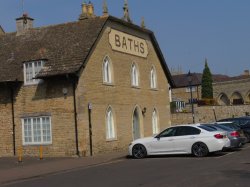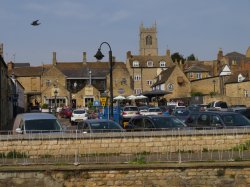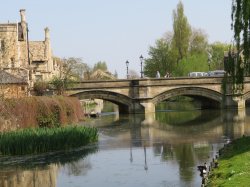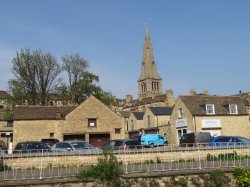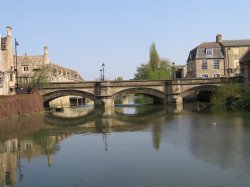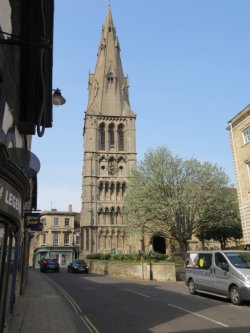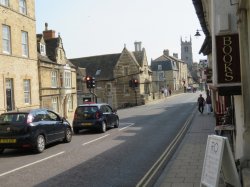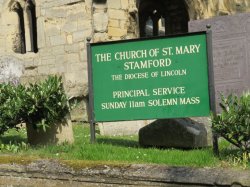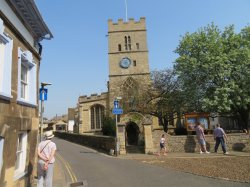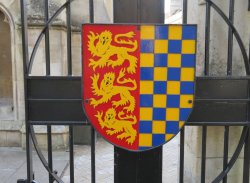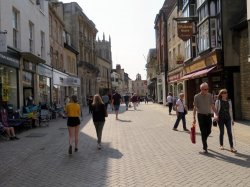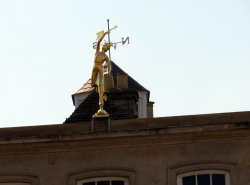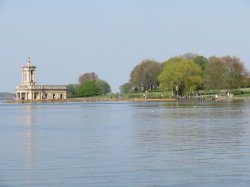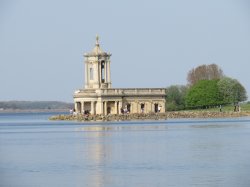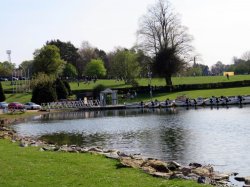 STAMFORD - Lincolnshire
STAMFORD - Lincolnshire
Stamford is a town on the River Welland in Lincolnshire, England, 92 miles (148 km) north of London on the A1. The population at the 2011 census was 19,701. The town has 17th and 18th-century stone buildings, older timber-framed buildings and five medieval parish churches. Stamford is a frequent filming location. In 2013 it was rated the best place to live in a survey by The Sunday Times.
HISTORY
The Romans built Ermine Street across what is now Burghley Park and forded the river Welland to the west of Stamford, eventually reaching Lincoln; they also built a town to the north at Great Casterton on the River Gwash. In AD 61 Boudica followed the Roman legion Legio IX Hispana across the river. The Anglo-Saxons later chose Stamford as their main town, being on a more important river than the Gwash.
The place-name Stamford is first attested in the Anglo-Saxon Chronicle, where it appears as Steanford in 922 and Stanford in 942. It appears as Stanford in the Domesday Book of 1086. The name means "stony ford".
In 972 King Edgar made Stamford a borough. The Anglo-Saxons and Danes faced each other across the river. The town had grown as a Danish settlement at the lowest point that the Welland could be crossed by ford or bridge. Stamford was the only one of the Five Boroughs of the Danelaw not to become a county town. Initially a pottery centre making Stamford Ware, by the Middle Ages it had gained fame for its production of wool and the woollen cloth known as Stamford cloth or haberget – which "In Henry III's reign... was well known in Venice."
Stamford was a walled town, but only a small portion of the walls remains. Stamford became an inland port on the Great North Road, the latter superseding Ermine Street in importance. Notable buildings in the town include the medieval Browne's Hospital, several churches and the buildings of Stamford School, a public school founded in 1532.
A Norman castle was built about 1075 and apparently demolished in 1484. The site stood derelict until the late 20th century, when it was built over and now includes a bus station and a modern housing development. A small part of the curtain wall survives at the junction of Castle Dyke and Bath Row.
Stamford has been hosting an annual fair since the Middle Ages. Stamford fair is mentioned in Shakespeare's Henry IV, Part 2 (Act 3, Scene 2). The mid-Lent fair is the largest street fair in Lincolnshire and one of the largest in the country. On 7 March 1190, crusaders at the fair led a pogrom; many Jews in the town were massacred.
A jug commemorates Ann Blades - a Stamford bull runner in 1792
For over 600 years Stamford was the site of the Stamford Bull Run, a festival held annually on 13 November, St Brice's day, until 1839. According to local tradition, this was started by William de Warenne, 5th Earl of Surrey, after seeing two bulls fighting in the meadow beneath his castle. Some butchers came to part the combatants and one of the bulls ran into the town. The earl mounted his horse and rode after the animal; he enjoyed the sport so much that he gave the meadow in which the fight began to the butchers of Stamford on condition that they continue to provide a bull, to be run in the town every 13 November.
The East Coast Main Line was originally planned to go through Stamford, as an important postal town at the time, but resistance there led to routing it instead through Peterborough, whose importance and size increased at Stamford's expense.
Stamford Museum occupied a Victorian building in Broad Street from 1980 to 2011. In June 2011 it was closed by Lincolnshire County Council budget cuts.[16] Some exhibits have been relocated to the Discover Stamford area at the town's library and to the Town Hall.
Click Picture to Zoom
 STAMFORD - Lincolnshire
STAMFORD - Lincolnshire

